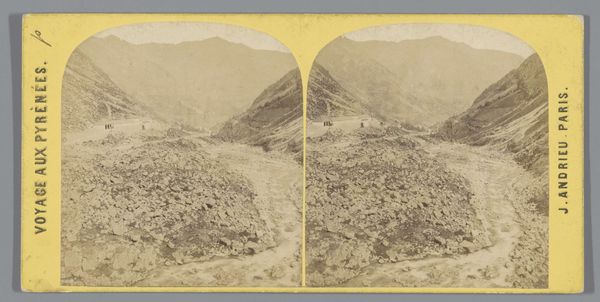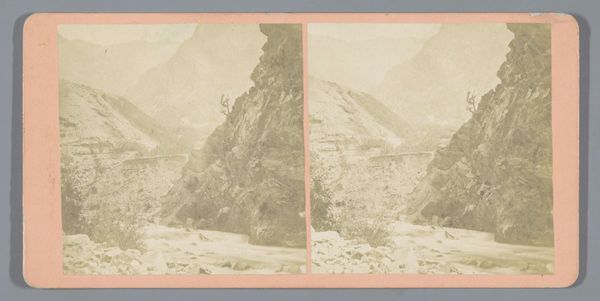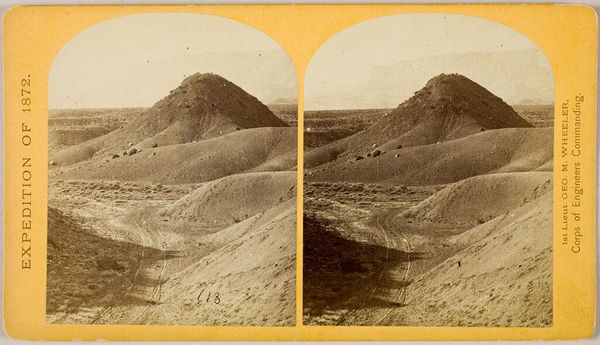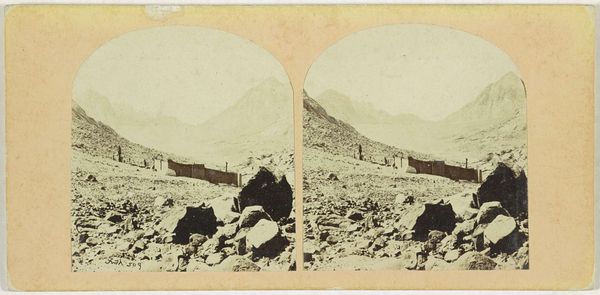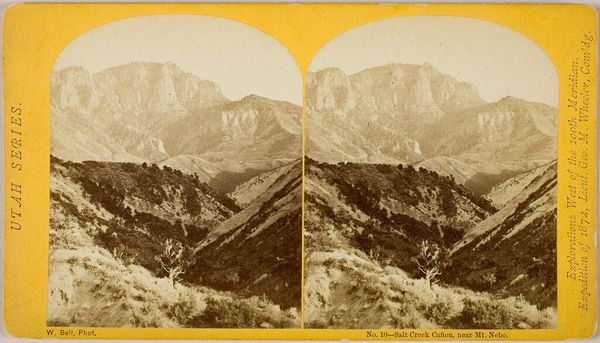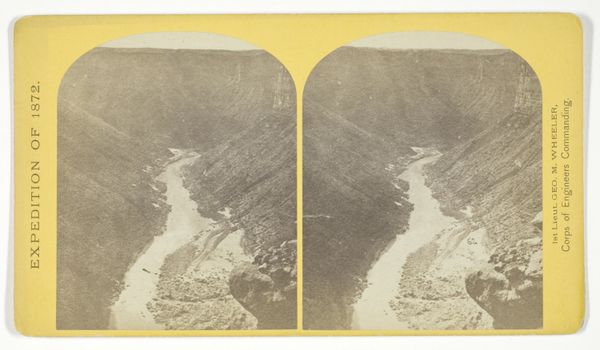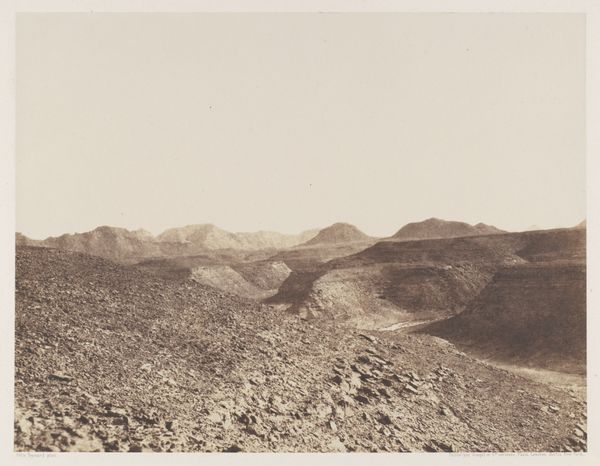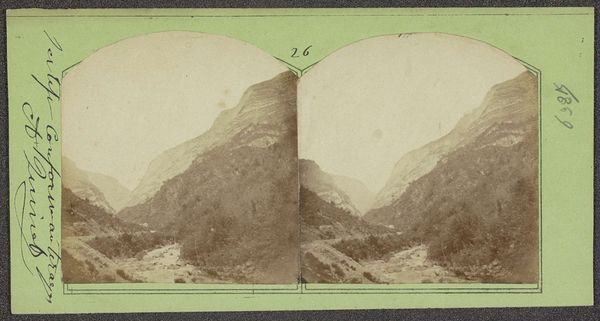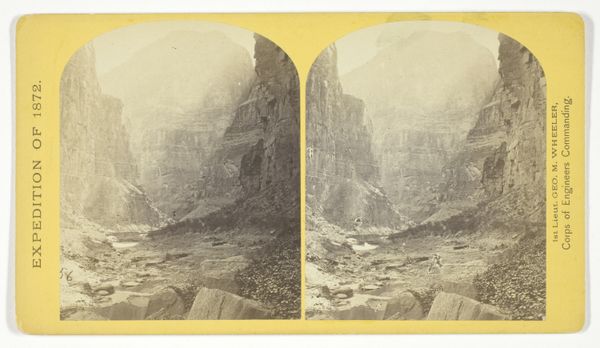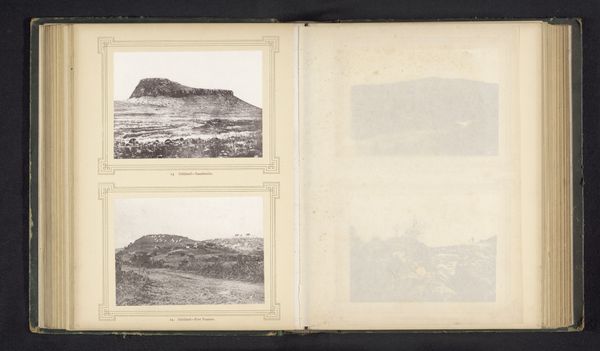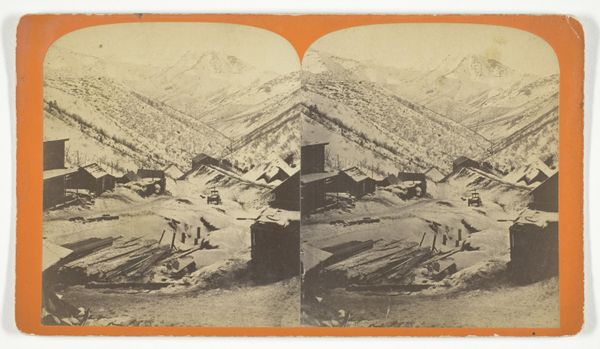
The "Vermillion Cliff," a typical plateau edge, as seen from Jacobs Pool, Arizona. From its top a plateau stretches to the right, and from its base another to the left. Their difference of level is 1.500 feet, and the step is too steep for scaling. 1872
0:00
0:00
photography, albumen-print
#
16_19th-century
#
landscape
#
photography
#
united-states
#
albumen-print
Dimensions: 9.3 × 7.5 cm (each image); 10 × 17.7 cm (card)
Copyright: Public Domain
Editor: This albumen print from 1872, titled "The 'Vermillion Cliff'..." by William Bell captures a stark landscape. What immediately strikes me is its textural quality; you can almost feel the grit of the earth and the vastness of the open space. How do you interpret this work? Curator: It's fascinating to consider the cultural weight this image carries, beyond simply being a record of the American West. Consider, first, that the US Geological Survey commissioned the photo. What does the stark landscape represent to a nation undergoing rapid westward expansion? Notice how the very steepness of the cliff implies impenetrability. It is as if the landscape itself resists settlement. Do you agree? Editor: I do. The image certainly feels like a kind of surveying of a frontier—an effort to capture and catalogue, even claim, this forbidding terrain. I hadn't thought about the landscape being read as a form of resistance. Curator: Yes, think about what symbols might reveal, or perhaps conceal. This isn’t just a pretty vista. It speaks to anxieties of the era. Are these insurmountable barriers? What unconscious fears might be buried in this landscape? How does that interact with our perception today, colored by cinema of the American West, the conquest and erasure of Native American life and landscape? Editor: That adds such a powerful layer. It transforms the photo from a seemingly straightforward landscape into a complex historical and psychological document. Curator: Precisely. An image’s power often lies in the cultural memories and continuity of symbols we find, even if we didn't consciously seek them. Editor: I’ll never look at landscape photography the same way again. Curator: Hopefully you never look at *any* image the same way again!
Comments
No comments
Be the first to comment and join the conversation on the ultimate creative platform.
